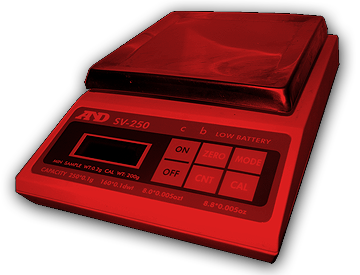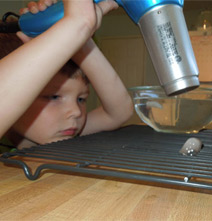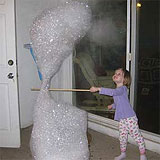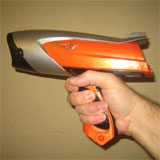The Fastest Way to Cool Down Beer
I was curious what the difference would be if I was using aluminum cans rather than glass bottles full of beer.
Any metal is more conductive than glass, and aluminum is particularly conductive.
Here's a short list of the thermal conductivity of some materials. Thermal conductivity is measured in watts per meter kelvin.
| nitrogen (gas) | 0.024 k |
| asbestos | 0.15 k |
| glass | 1.05 k |
| cement | 1.7 k |
| stainless steel | 16 k |
| aluminum | 250 k |
| silver | 429 k |
Thermal resistance is highly dependant on the thickness of the insulating material, so the paper-thin aluminum will be much easier for the coldness to pass through than a quarter-inch of glass.
Glass bottles are great for drinking, and the glass is a good insulator for when you are trying to keep the beer cold, but when you are trying to cool down the beer, that insulation works against your efforts to pull all the heat out.
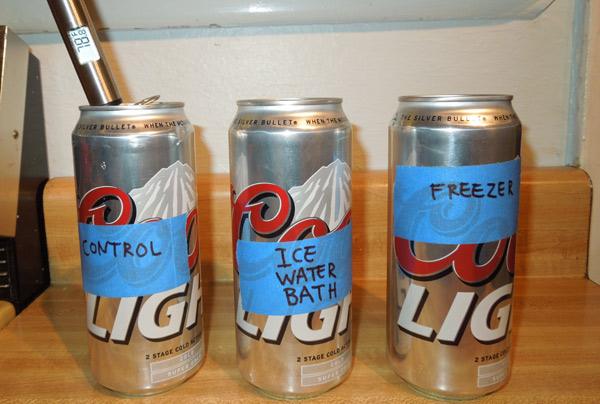
I started with a six pack of tall cans of warm Coors Light from a gas station. The start temperature for these cans was 78.8°F (26°C).
I don't think I've ever wanted beer less than when I was handling these warm cans of Coors Light.
I restarted the experiment, placing one can in the freezer...

...and one can in a jar with 3 cups of water and 10 ice cubes.
The race. was. on. again.
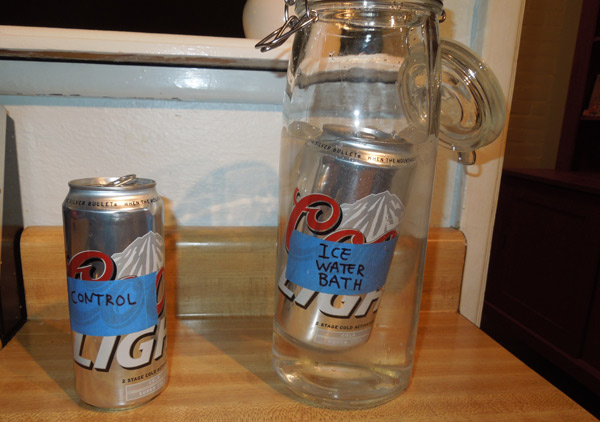
Knowing that the canned beer would change temperature much faster, I only waited 10 minutes to open the cans and test the temps.
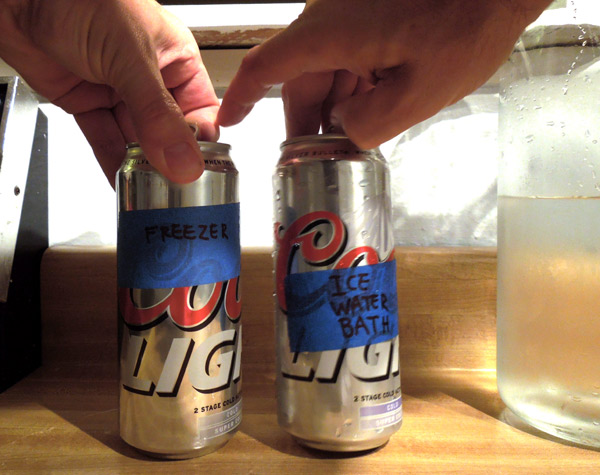
The temperature difference was even more impressive with beer cans. Check out these results on the chart below.
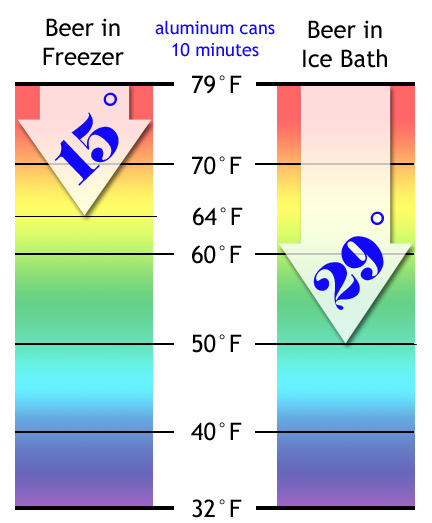
The beer in ice water had dropped dramatically in temperature, from 79°F (26°C) to 50°F (10°C)! Awesome.
The beer in the freezer had lost 15 degrees. It was losing heat faster than the freezer bottle had, but the ice-water bath was having an even more extreme effect on the metal can than it had on the glass bottle.
In ten minutes, the cans of beer in ice-water had gone from warm to cold, from bad to good.
I put them back for another 10 minutes of cooling.
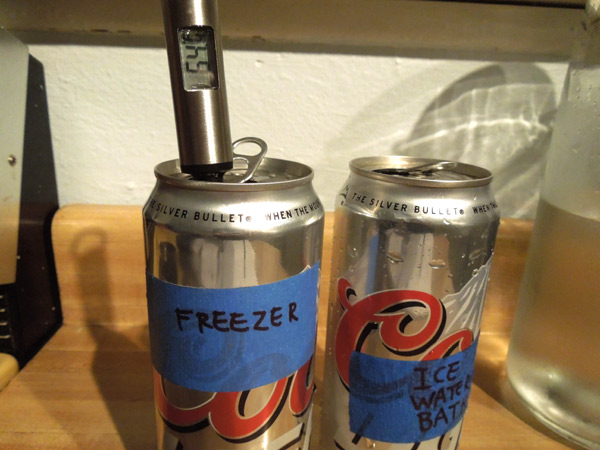
A second ten minutes really proved the case for an ice water bath. The freezer beer was down to 54°F, but the ice bath beer was down to 43°F!

My cans of Coors Light featured this two-stage temperature indicator. The can on the left came out of the freezer. The can on the right came out of the ice-water bath. The indicator on the left isn't even showing the can as "cold", where the can from the ice water is registering as "super cold"!
In the photo above, check out the difference in condensation on the cans!
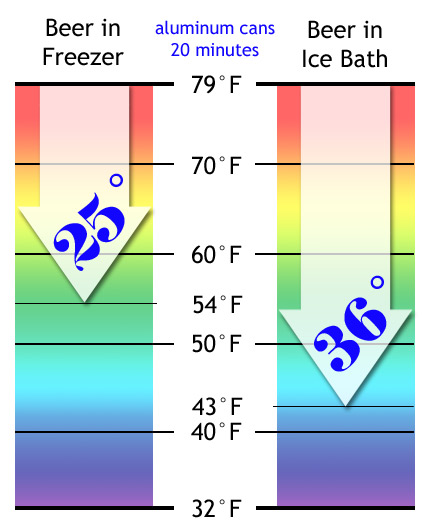
With two experiments complete, and four beers sacraficed in the pursuit of knowledge, I can wholeheartedly declare that a bath of ice water is the fastest way to cool beer down to a pleasant drinking temperature.

The freezer is colder, but surrounding a can of beer with cold air is never going to cool it off as fast as dunking it into a vat of cold water.

Unless, of course you are making beer slushies.
UPDATE: I tried a similar experiment with salt in the water: Using Salt and Ice Water to Cool Down Beer
Cockeyed home page | Contact | Terms and Conditions | Updated August 18, 2012 Copyright 2012 Cockeyed.com


